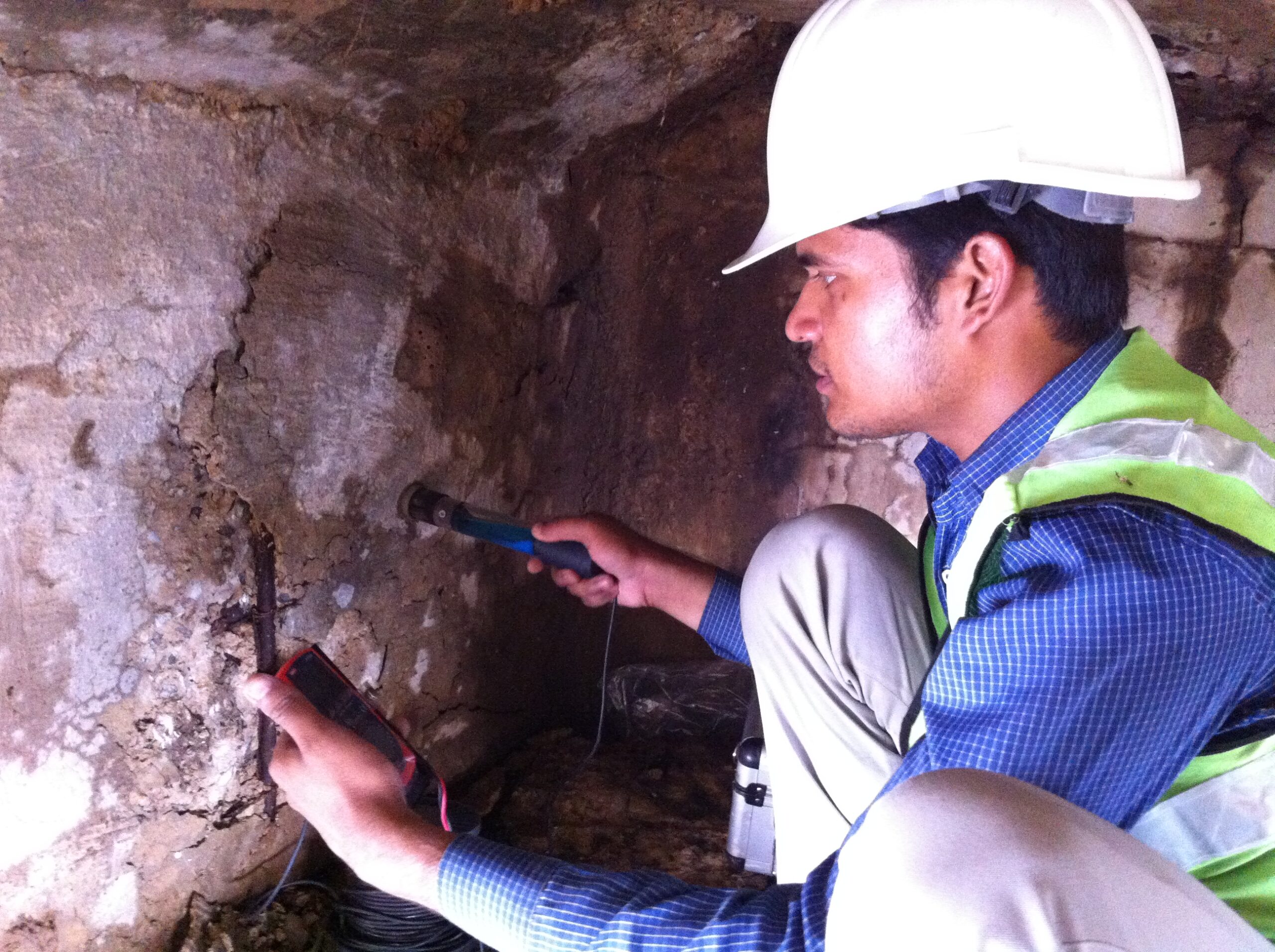Description
Resistivity Tests
Resistivity Tests are carried out to determine the resistance of structural concrete to the active corrosion. When the resistivity of the concrete is high, it is assumed that the probability of active and rapidly advancing corrosion is low and vice versa.
Resistivity Test is a rapid test to ascertain the quality of concrete against rebars corrosion.
Corrosion Rate Assessment
Monitoring the corrosion activity and determining the rate of corrosion in the RCC structures is essential for the condition monitoring and estimating the service life of the structural member.
Corrosion Rate is measured using GalvaPulse. GalvaPulse evaluates the corrosion rate of reinforcement by measuring Galvanic resistance using the Galvanostatic pulse technique.
Carbonation Test
The natural alkalinity in concrete provides a protective layer against corrosion. Carbon dioxide in air reacts with the Calcium salts, resulting in reduced pH, making the structure susceptible to corrosion. This reaction is termed as Carbonation.
The depth of carbonation is determined using Phenolphthalein as an indicator.
The test is a quick method to evaluate the cause of corrosion during corrosion surveys.




Reviews
There are no reviews yet.